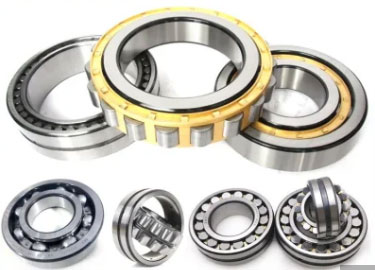Four-row tapered roller bearings
Bearings are essential components in various machinery and equipment, ensuring that they operate smoothly and efficiently. Among the myriad of bearing types, four-row tapered roller bearings stand out for their unique design and exceptional capabilities. In this article, we will delve into the world of four-row tapered roller bearings, discussing their structure, applications, advantages, and maintenance.

Structure of Four-Row Tapered Roller Bearings
As the name suggests, four-row tapered roller bearings consist of four rows of tapered rollers arranged in parallel. These bearings are designed to support heavy radial and axial loads, as well as combined loads. Each row is positioned so that the rollers converge at a common point on the bearing axis, ensuring optimal load distribution.
The bearing assembly typically includes the following components:
Inner ring: Composed of four separate cone assemblies, each containing a roller, cage, and cone.
Outer ring: Composed of two double-cup assemblies, which house the rollers and cages.
Rollers: The tapered rollers, which are the primary load-carrying elements.
Cages: These keep the rollers in their appropriate positions and maintain the correct spacing between them.
Applications
Four-row tapered roller bearings are used in various industries due to their high load-carrying capacity, durability, and precision. Some common applications include:
Rolling mills: In both hot and cold rolling mills, these bearings are used to support the work rolls, backup rolls, and roll necks.
Gearboxes: They provide support for heavy loads and high-torque transmission in industrial gearboxes.
Heavy machinery: Mining, construction, and agricultural equipment often rely on these bearings to ensure smooth operation under extreme conditions.
Wind turbines: The high load capacity and rigidity make them ideal for wind turbine main shafts.
Four-row tapered roller bearings offer several benefits over other bearing types, such as:
High load capacity: The multiple rows of rollers allow for an increased load-carrying capacity, making these bearings suitable for heavy-duty applications.
Improved stiffness: The arrangement of the rollers ensures better rigidity, allowing for higher precision and reduced deflection.
Enhanced durability: The even distribution of loads across multiple rows minimizes the risk of premature wear and prolongs the bearing life.
Simplified maintenance: Many designs feature separable components, making it easier to disassemble, inspect, and replace parts.
Maintenance
To ensure optimal performance and prolong the life of four-row tapered roller bearings, proper maintenance is crucial. Some key maintenance practices include:
Regular inspections: Check for signs of wear, damage, or contamination during routine equipment maintenance.
Lubrication: Apply the appropriate lubricant to reduce friction, minimize wear, and protect against contaminants.
Bearing replacement: When necessary, replace bearings with identical or equivalent models to maintain the machine's performance and safety.
Alignment: Ensure that bearing components are correctly aligned during installation to avoid excessive stress on the rollers and prevent premature failure.
Four-row tapered roller bearings are versatile, high-performance components that play a critical role in various industries. Their unique design provides superior load-carrying capacity, rigidity, and durability, making them the bearing of choice for demanding applications. By understanding their structure, applications, advantages, and maintenance requirements, you can ensure the optimal performance and longevity of your equipment.
- Previous: Double-row cylindrical roller bearings
- Next: Unveiling the Essentials of Single-Row Tapered Roller Bearings













